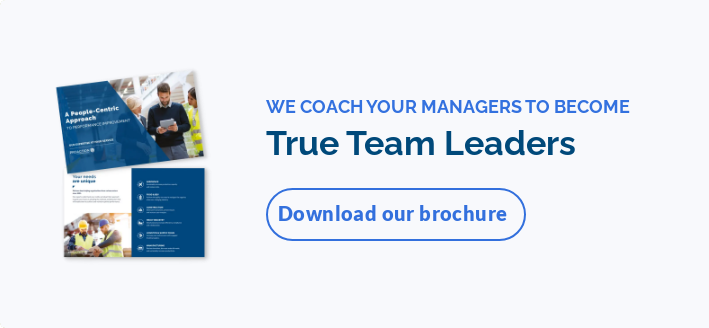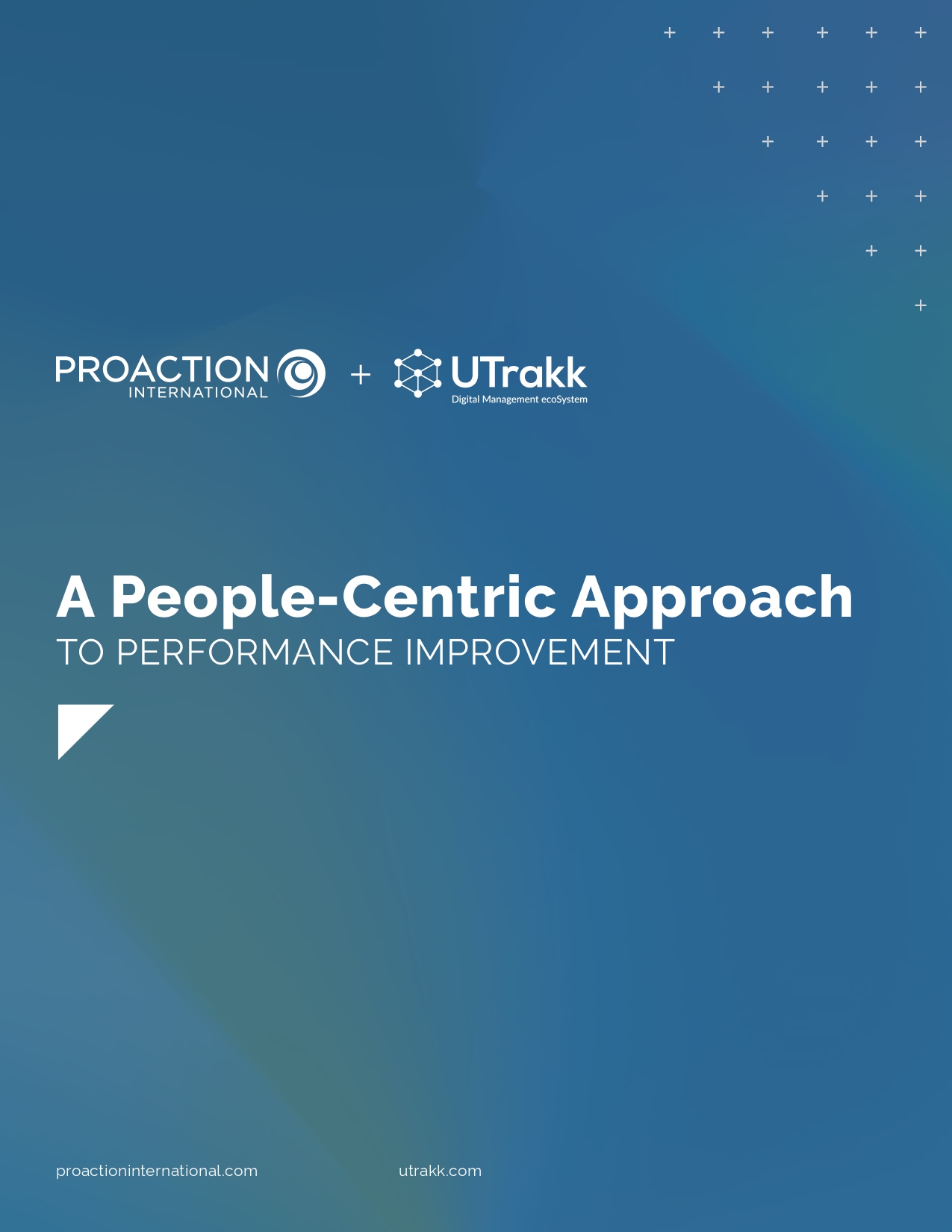What is a leadership development plan?
A leadership development plan is a structured program that defines the actions required to develop one or more individuals (current or future leaders) within an organization.
Unlike a succession of one-off training courses, a leadership development plan is a personalized, evolving process based on precise, measurable objectives.
Such a plan rests on three essential pillars:
- Needs assessment: Identifying the key leadership competencies to be strengthened within the company.
- Implementation of targeted actions: Deploy strategies tailored to leadership development goals.
- Monitoring and continuous adjustment: Measuring progress and fine-tuning the trajectory continuously.
Benefits of creating a leadership development plan
Despite 76% of organizations significantly updating their leadership programs and planning to increase spending, results remain lacking.
- Only 36% of HR leaders think their organization’s current leadership development programs are effective at preparing leaders for future challenges.
- Only 23% of HR leaders are confident there are rising leaders who can meet the future needs of the organization.
- 71% of HR leaders don’t think they are effectively developing their midlevel leaders.
Align leadership skills with the company's vision and priorities
With a structured leadership development plan, leaders can align with strategic and operational objectives and make decisions aligned with the company's direction. This avoids discrepancies between top management and the field while speeding up the achievement of priorities.
Facilitate the identification and development of talent
The development plan makes it possible to anticipate leadership skills needs and identify high-potential employees before a key position becomes vacant. In this way, the company ensures effective succession planning by giving in-house talent the tools to develop into leadership roles.
Increase talent retention
A well-defined leadership development plan contributes to employee retention by offering clear professional development opportunities, a future with the company, and a path for advancement.
Create a consistent leadership style at all levels
A unified approach to leadership creates a more harmonious work dynamic, whatever the hierarchical level. It strengthens collaboration and organizational clarity by avoiding management styles that are too disparate between different departments.
6 Key steps to creating a leadership development plan

1. Identify talent: Who has the potential to become a leader?
A good program starts by identifying potential leaders. This step involves assessing leadership competencies and behavioral qualities, such as emotional intelligence, decision-making, and the ability to inspire others.
How?
- Make field observations: Who naturally takes responsibility? Who positively influences colleagues?
- Get 360-degree feedback from colleagues, peers, and superiors.
- Conduct psychometric tests: Assess soft skills and leadership styles.
- Perform role-playing sessions: Assign projects or temporary responsibilities to specific talents.
Example
A manufacturing company uses 360-degree feedback and a Lean project to identify operators who, over and above their technical know-how, demonstrate natural team management skills such as initiative-taking and the ability to federate.
2. Analyze company needs: What leadership qualities must be developed?
Take stock of the level of current leaders and identified talents, then analyze the difference between the skills available and those that need to be developed for effective leadership. This step enables you to define a clear starting point and priority areas for improvement.
How?
- Analyze current leadership skills compared to the company's future needs.
- Get 360-degree feedback from employees, peers, and superiors.
- Hold interviews and self-assessments: Ask current and future leaders about their aspirations, challenges, and the skills they wish to develop.
Example
A plant found that its supervisors were technically competent but struggled to communicate effectively and manage change. Following an internal survey and individual interviews, specific modules on managerial communication and change management are integrated into the leadership development program.
3. Define clear, measurable objectives: What do you want to achieve?
Once you've identified the skills you need, you must define clear, measurable leadership development goals that align with the company's strategy and the needs of leaders. To do this, use the SMART method.
How?
- Specific: Identify precisely the skill to be developed.
- Measurable: Define clear evaluation criteria.
- Achievable: Ensure that the objective is realistic in terms of available resources.
- Realistic: Take into account company and sector constraints.
- Time-bound: Set a precise deadline.
Example
An organization wants to improve its supervisors' ability to manage conflict. The goal is: “Within six months, each supervisor should have received specialized training and participated in three role-play exercises on conflict management, with a measurable improvement in the social climate observed via team feedback.”
4. Choose the right leadership development methods: What strategies should you try?
A leadership development plan must combine several development strategies adapted to the people involved and the company's reality.

Example
An automotive parts manufacturer is short of leadership talent. Current managers are technically excellent but lack experience in team management and decision-making. The company sets up a leadership development plan template to remedy this situation:
- Targeted managerial communication and conflict management training, combining face-to-face and online modules.
- Mentoring: Each supervisor is paired with an experienced manager.
- Field experience: Temporary takeover of a continuous improvement project in another unit to develop the ability to manage change.
- Coaching in leadership development and stress management.
- Structured feedback: Follow-up at 3, 6, and 12 months with HR and mentor assessments.
5. Integrate leadership in the corporate culture: How to perpetuate best leadership behaviors in the long term?
An effective leadership development plan should not be an isolated program but a recurring practice embedded in the company's DNA. To ensure a positive and lasting impact, leadership must become a regular practice integrated into internal processes, and the skills developed must be valued.
How?
- Create a dynamic of continuous development (post-training follow-up, learning rituals, continuously accessible resources).
- Integrate leadership into daily practices: encourage managers to apply what they learn, include leadership discussions in team meetings, and involve managers in coaching future leaders.
- Make leadership a key strategy for career growth (e.g., promotions linked to validation of the leadership program and skills included in annual appraisals).
Example
A company seeks to reduce supervisor turnover by embedding leadership in its daily operations. To this end, it implements a structured mentoring program in which an experienced leader accompanies each new supervisor for six months.
In addition, production meetings include a discussion of managerial challenges, and compulsory field projects enable supervisors to apply their learning.
Last but not least, regular follow-ups with employees and management assessments ensure the continuous improvement of the program.
6. Monitor and adjust the plan: How to measure and continuously improve impact?
A leadership development plan evolves. It must be regularly evaluated using relevant monitoring indicators and adjusted according to the results obtained to ensure continuous improvement.
How?
- Measure leaders' progress against objectives.
- Measure leaders' engagement (participation in leadership training, involvement in projects).
- Measure employee satisfaction.
- Analyze the impact on team management, performance, and the overall effect (organizational climate).
Example
An organization tracks the development of its managers via a quarterly evaluation grid incorporating employee feedback and behavioral indicators. This data allows the company to adjust its program to meet identified needs better and guarantee tangible results.
Tips for creating a successful leadership development plan
Practice leadership on the shop floor
Don't be content with a theoretical approach; focus on experimentation and practical application. Leadership is not just learned in the training room. It must be tested through real-life situations, concrete projects, and accurate decision-making. Expose participants to managerial challenges so they can apply what they learn immediately.
Customize the plan to specific profiles and levels of experience
An aspiring leader doesn't have the same needs as an experienced executive. Structure your program into several levels, then tailor the coaching to the skills already acquired and the responsibilities of each participant. This flexibility will make the program more relevant and engaging.
Consider the realities of the organization
A leadership development plan must be directly applicable to leaders' day-to-day work and aligned with operational constraints. The program should be based on concrete cases specific to the company to avoid any gap between what is taught and the realities of the workplace. Experienced managers should also be involved in its design.
Encourage collaborative learning and peer-to-peer exchange
Leadership is also developed through the sharing of experiences. Include co-development sessions, workgroups, and moments of exchange between participants in your plan to encourage collective learning.
Leaders who have utilized peer-connection-based learning experiences are 18% more likely to be enterprise leaders.
Ensure the plan fosters continuous learning and progression
One-off learning will only have a limited effect. The leadership development journey should be designed as an ongoing process, with step-by-step progression and long-term support.
Recognize efforts and progress of leaders in training
Recognition motivates and strengthens commitment. Set up follow-up systems where progress is visible and recognized, for example, by sharing successes internally or offering promotion opportunities to participants who have validated particular plan stages.
Implement a strategic development plan for a strong and sustainable leadership
A successful leadership development plan is not locked in time. The leadership development journey is an engine of continuous evolution that shapes leaders capable of adapting to present and future challenges. Combining strategic vision, dynamic learning methods, and a firm grounding in corporate culture stimulates team engagement and organizational performance.
The challenge is to develop good leaders and establish consistent leadership at all levels so that each leader finds their place and develops their full potential. A structured, flexible plan strengthens individual skills and a company's resilience and competitiveness in the face of market transformations.








